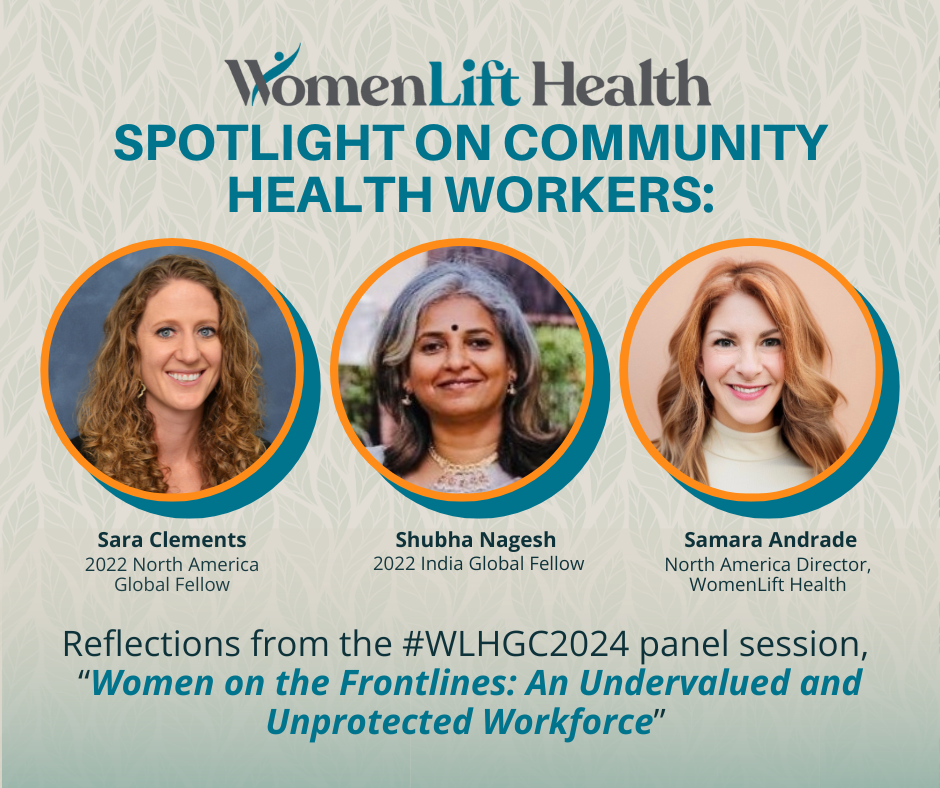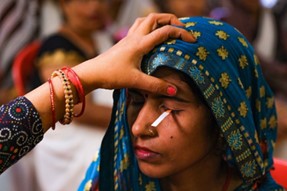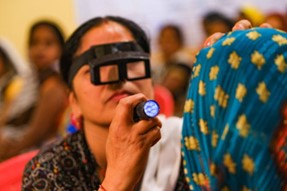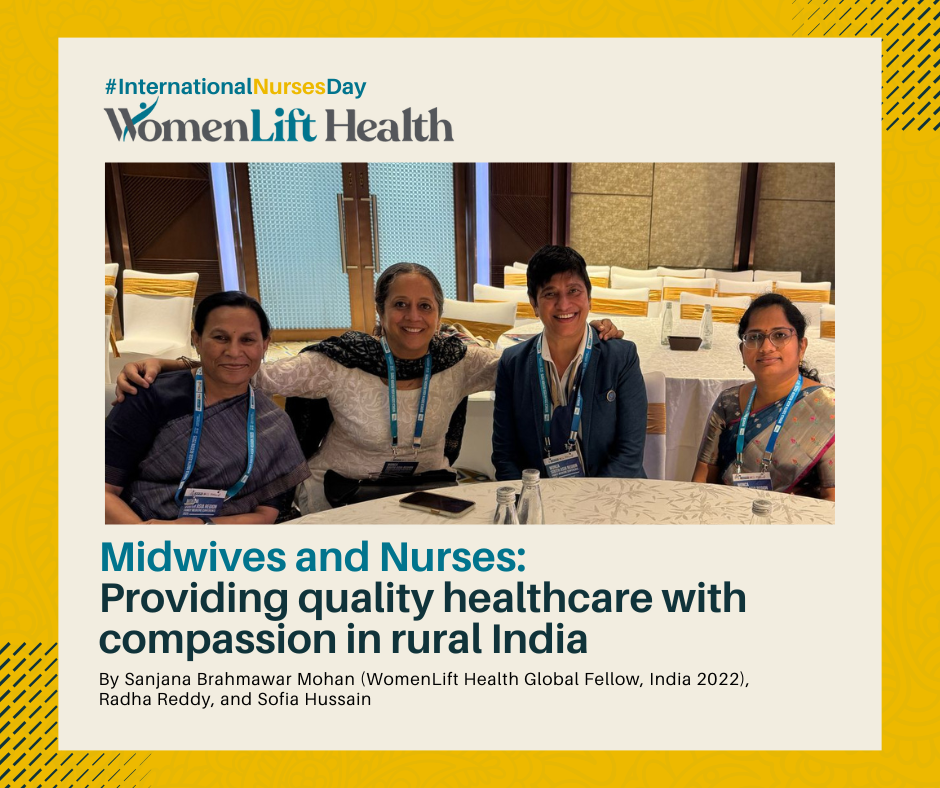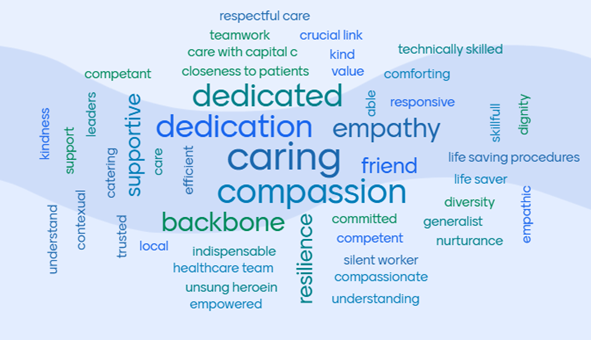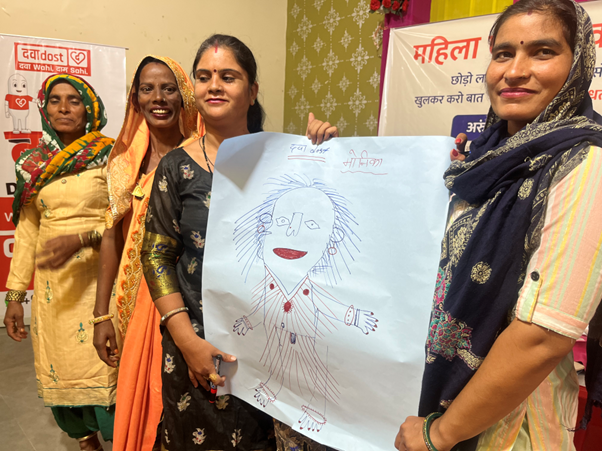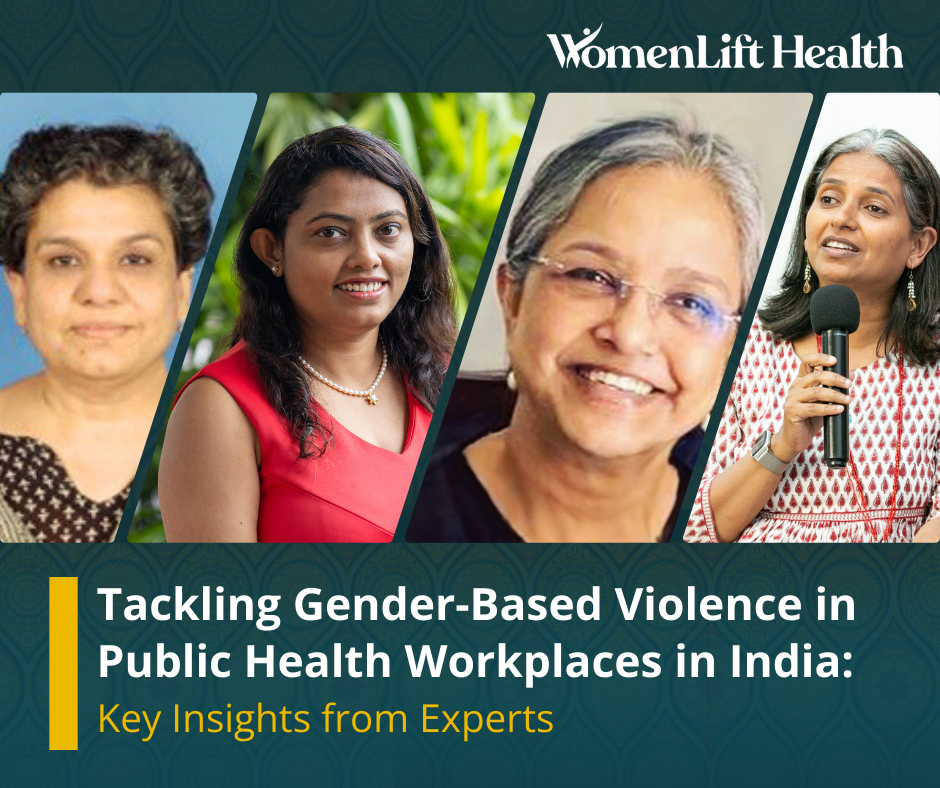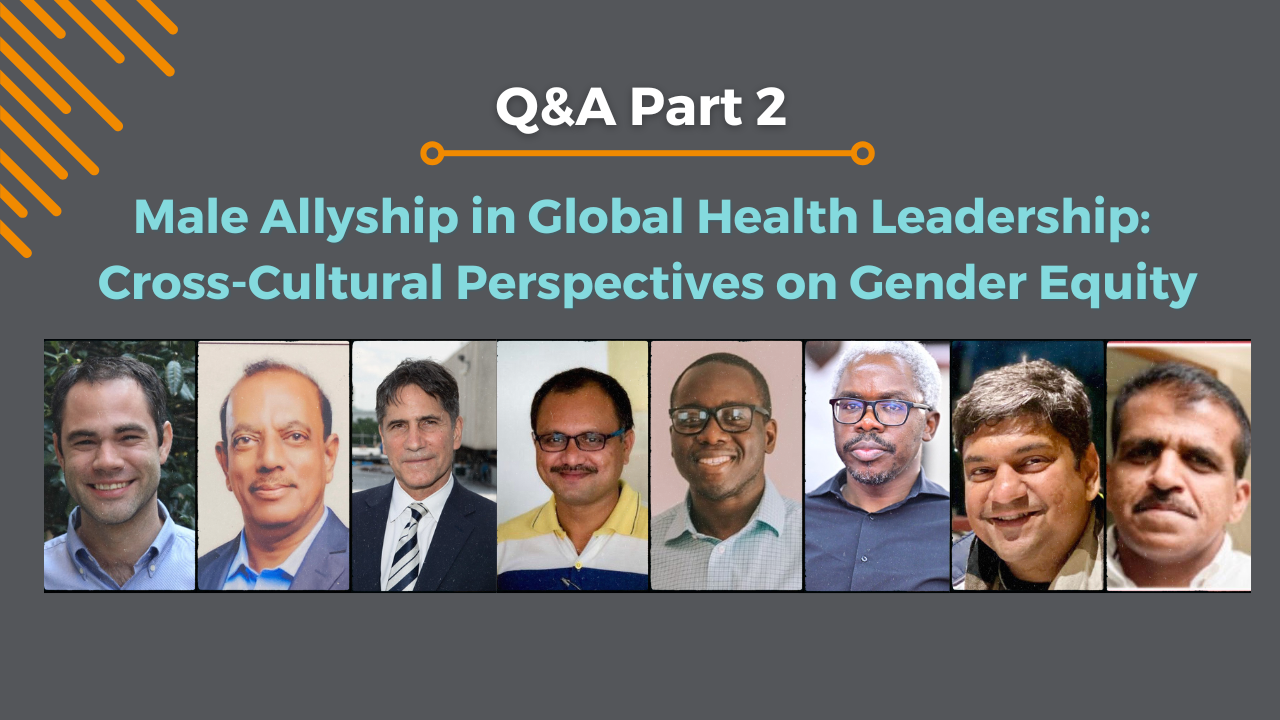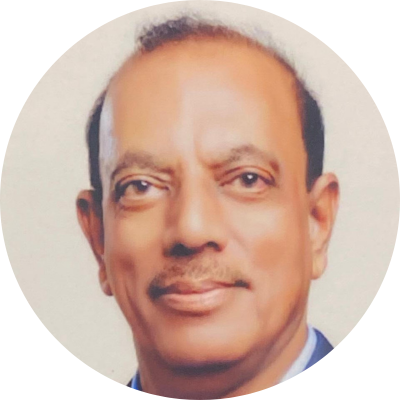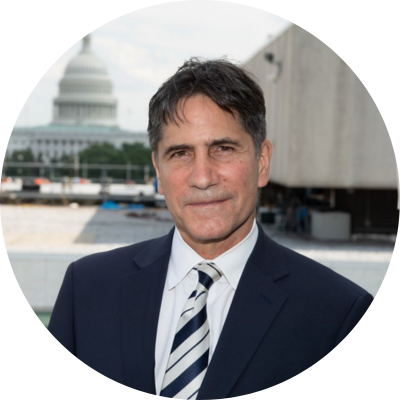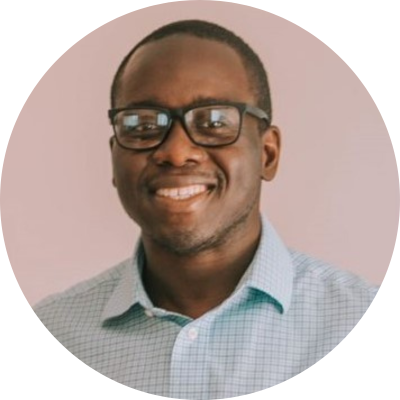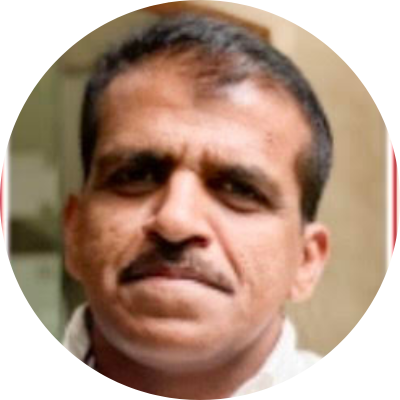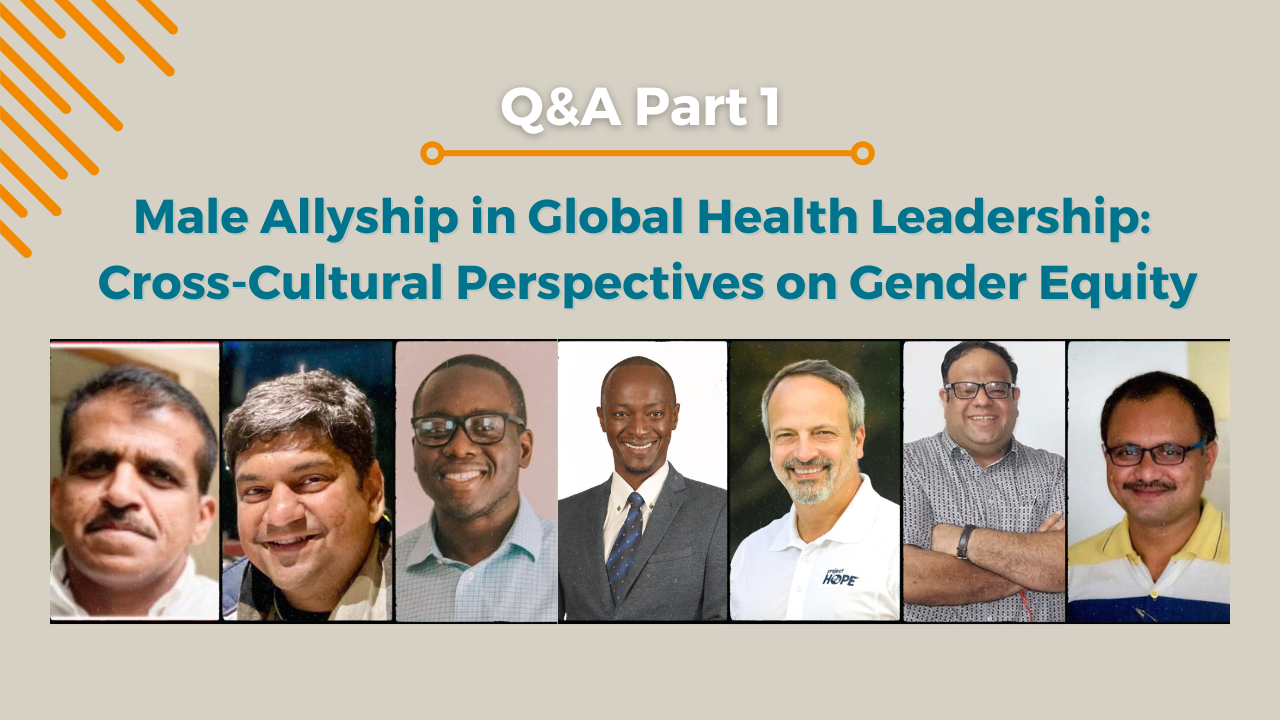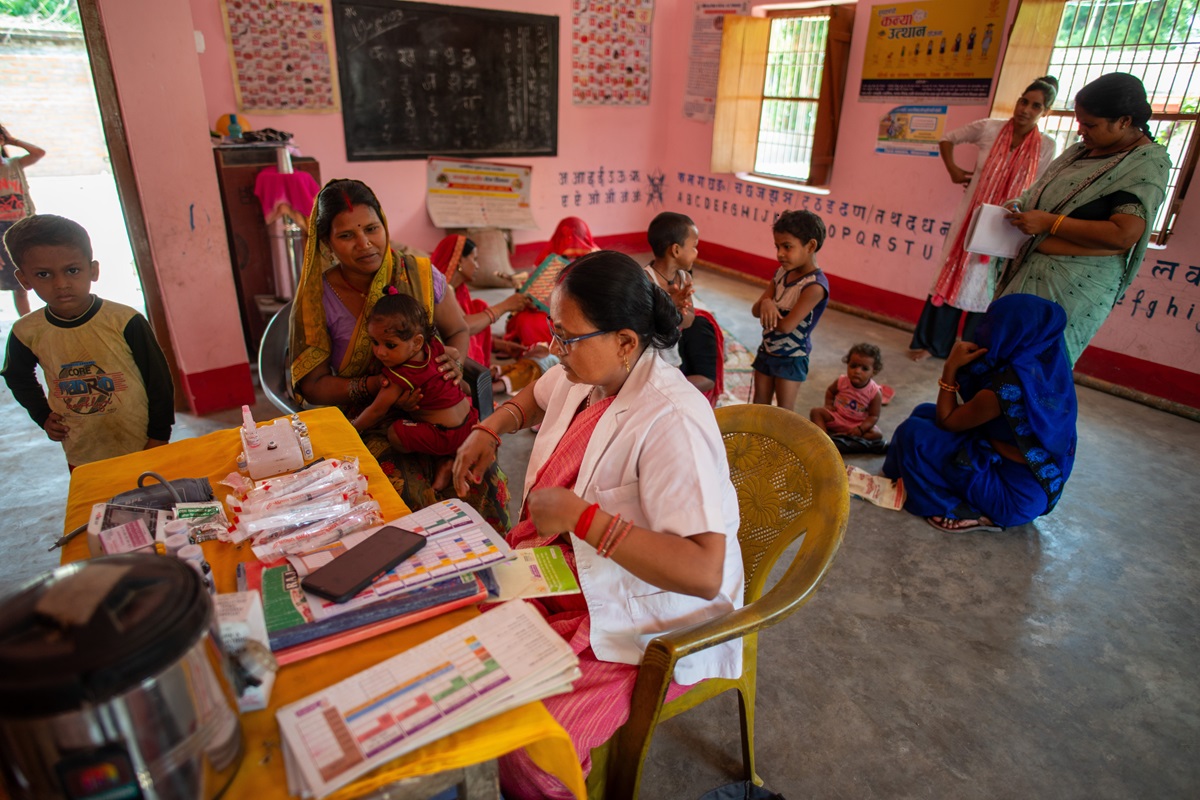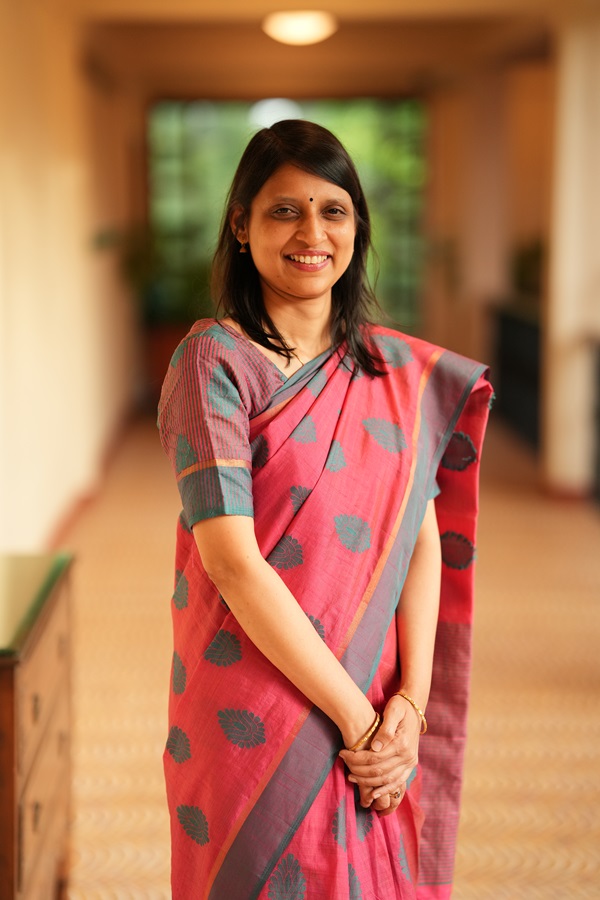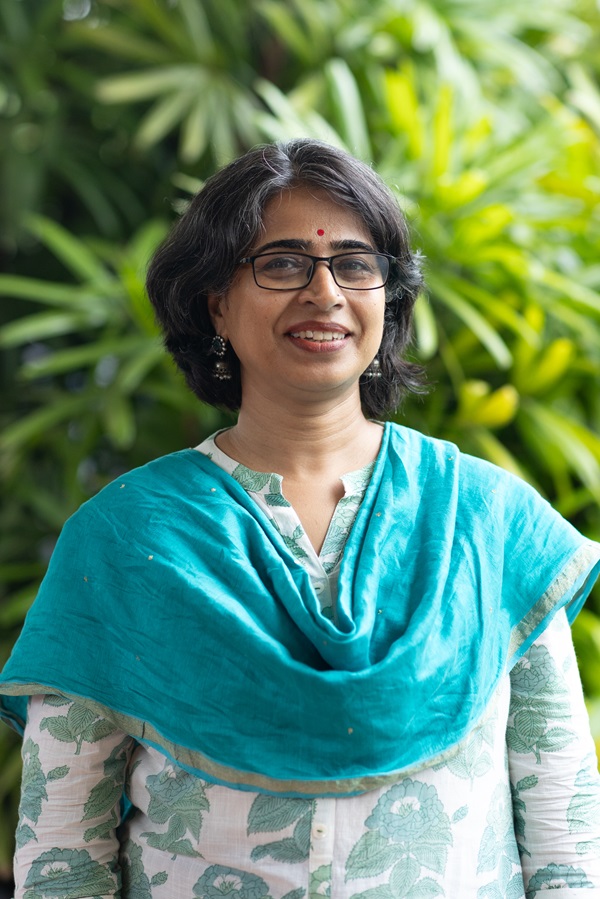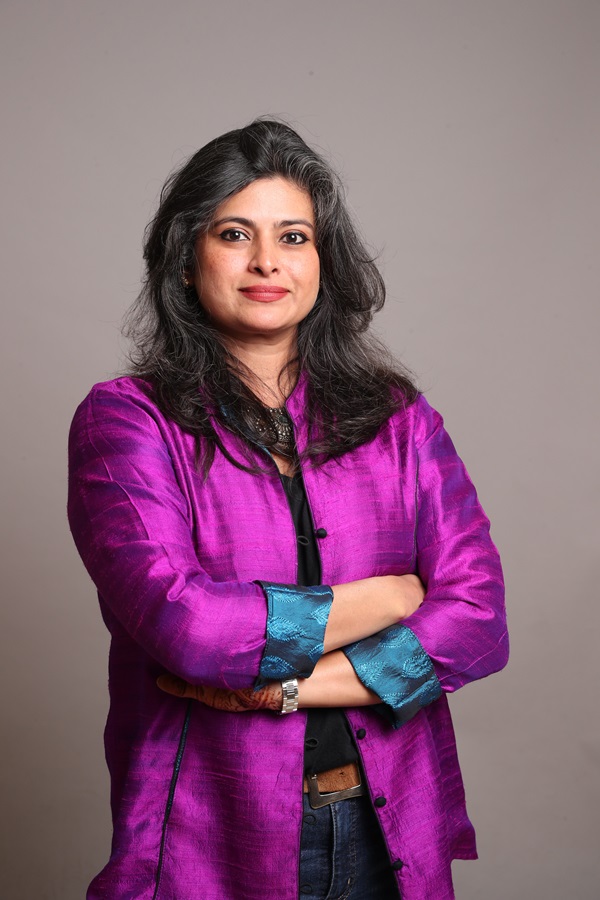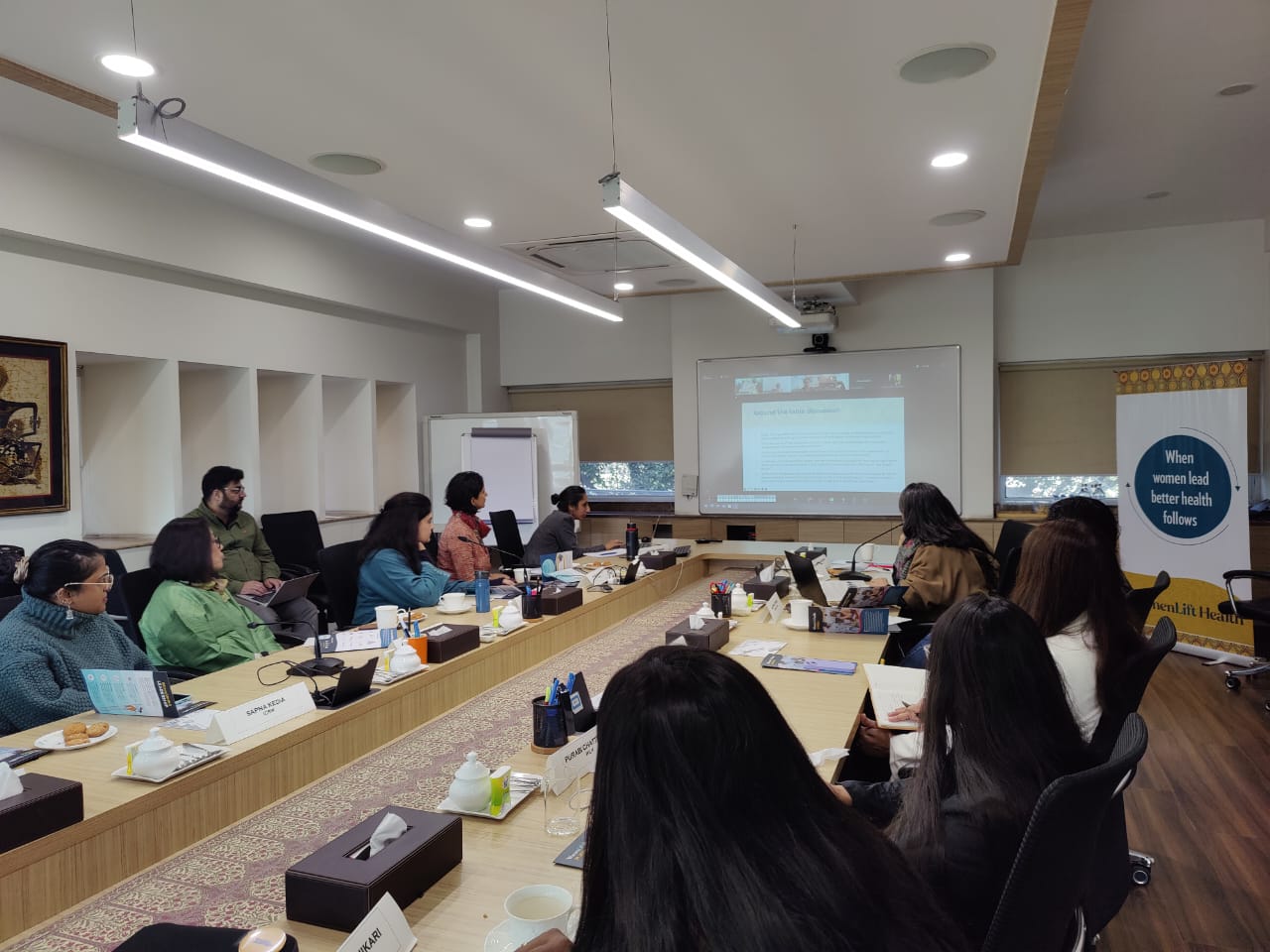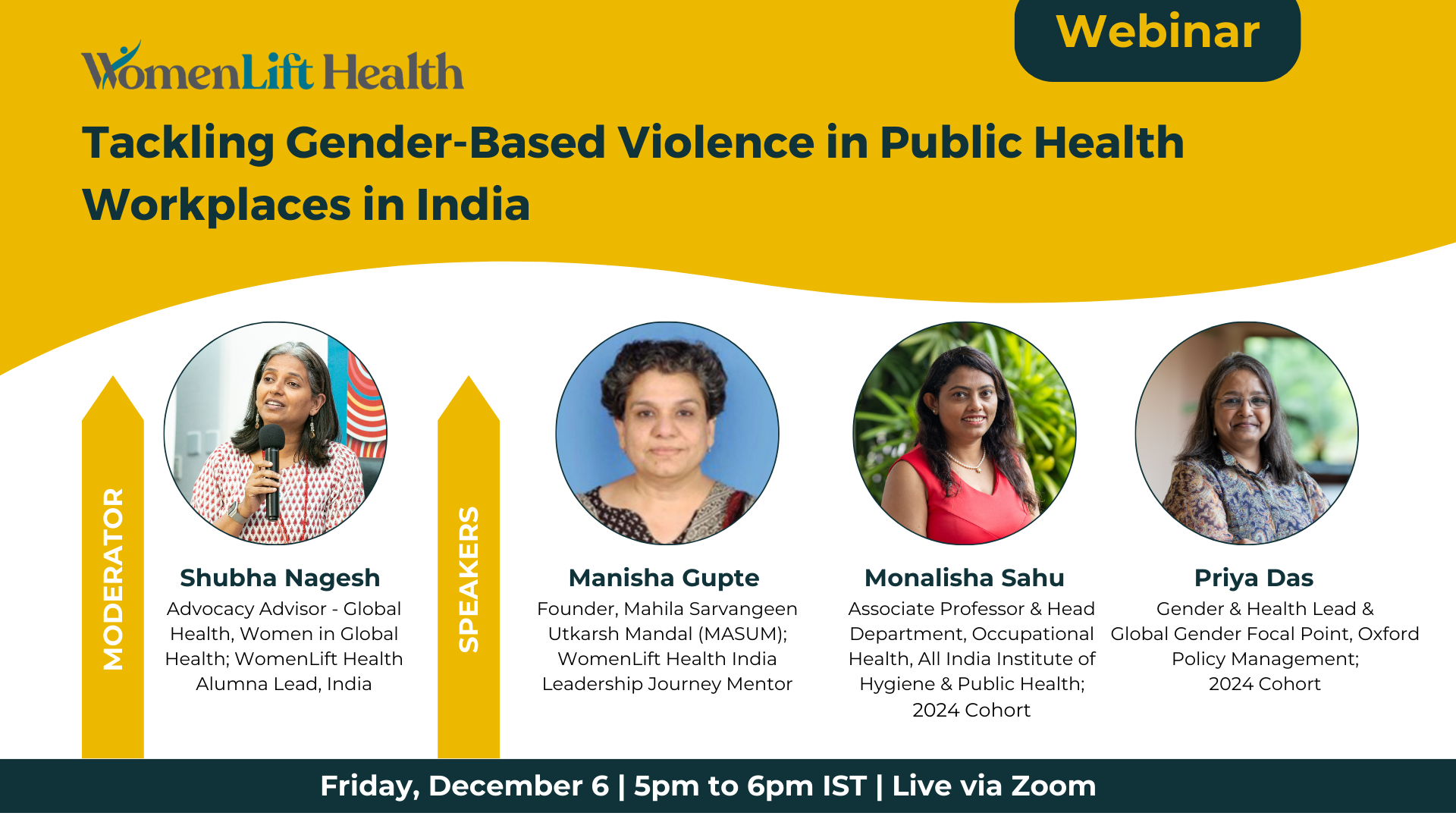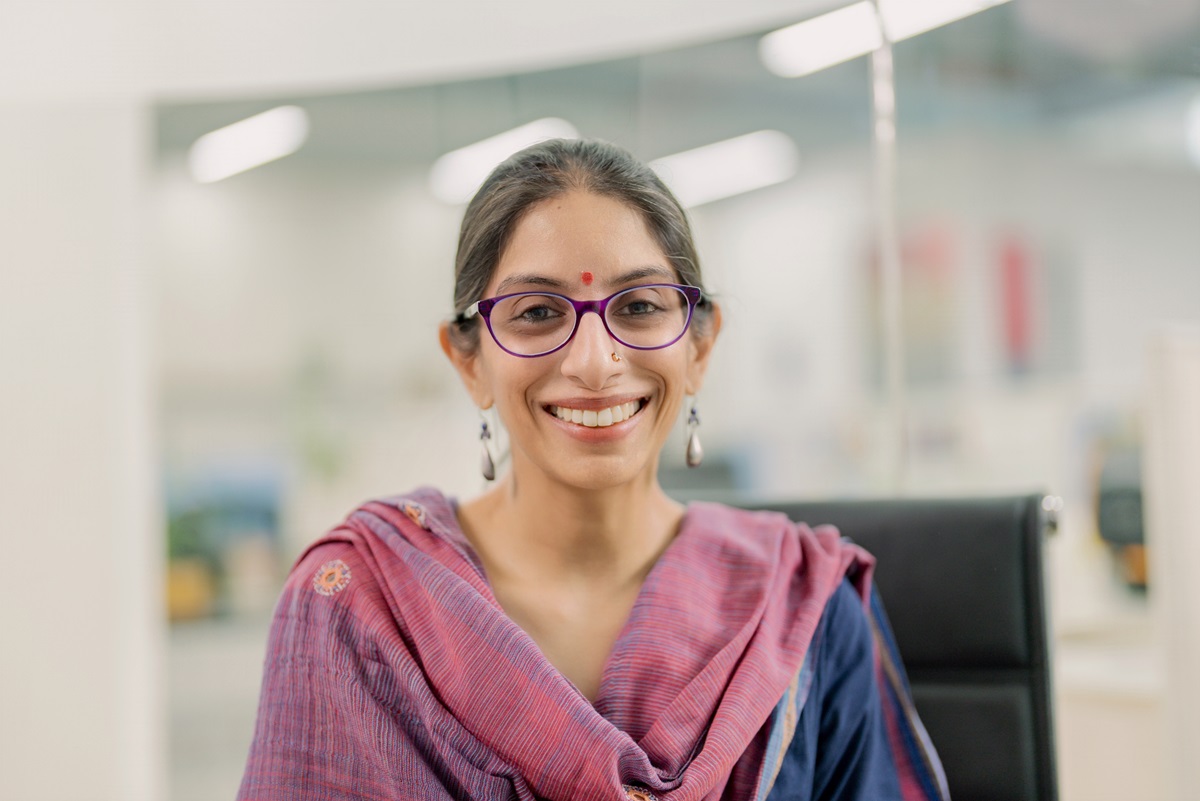Follow-up spotlight from WomenLift Health Global Conference panel session,
“Women on the Frontlines: An Undervalued and Unprotected Workforce”
Author’s responses have been edited for length. In this piece, “frontline health workers,” “frontline workers,” and “community health workers” are used interchangeably.
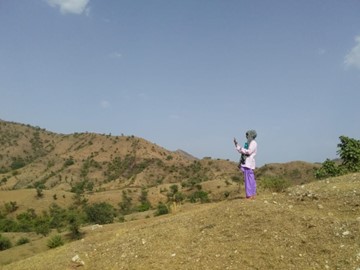
Where or how have you worked with community health workers (CHWs) in your work?
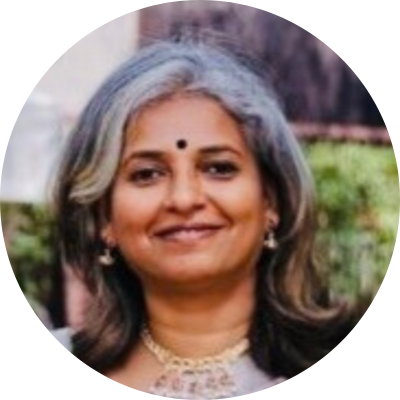
A core component of this initiative was the translation of the WHO Ten-Question Tool into Hindi. This tool could be administered in homes of remote villages, which enabled CHWs detect early “red flags” in a child’s development, such as delays in motor skills, speech, or social interaction, and refer them to an early intervention center for further assessment and support.
This program had a profound impact. Hundreds of children in remote villages were diagnosed early, which allowed for timely intervention that significantly improved their long-term development outcomes. The program was free of charge for parents, removing a key barrier to care, and CHWs were paid a salary, ensuring their dedication and long-term involvement in the initiative.
Through this work, I saw firsthand how empowering CHWs with the right training, tools, and support can make a transformative difference in children’s lives, particularly in underserved and remote communities.
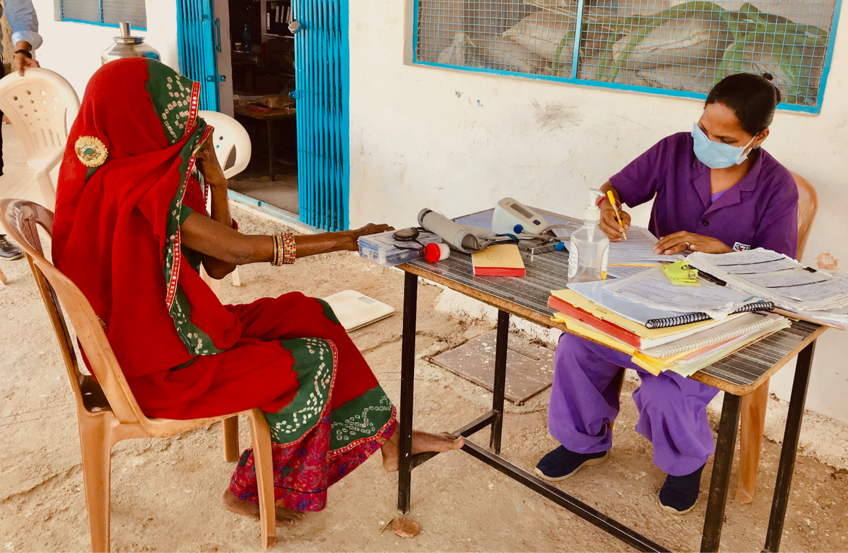

In those early years, I began noticing a troubling pattern during meetings with country leadership, donors, and occasionally mid-level supervisors. Nearly every proposed solution to a public health issue seemed to place additional responsibilities and burdens on CHWs—none of whom were present at the table. This absence of CHWs in discussions about their own work made me realize that the system wasn’t fully considering the realities of their role.
Since then, I’ve worked to shift the narrative. Rather than perpetuating the expectation that CHWs should continually shoulder more responsibilities, I’ve advocated for donors and leaders to consider the broader systems, processes, and leadership decisions that directly impact the ability of CHWs to perform their critical work safely and effectively.

One of the most inspiring programs I worked on was with Sitapur Eye Hospital in Uttar Pradesh State in India, training CHWs to provide critical first aid eye care in rural sugar cane farming communities. During harvest season, corneal abrasions were particularly common, which could lead to blindness if left untreated. These communities were far from eye hospitals, preventing community members from obtaining the care they needed.
In this program, CHWs were provided with training and a medical kit, which enabled them to provide critical eye care and treatment to resolve abrasions, or refer patients to a local hospital where needed. With the right training, equipment, diagnostic tools and community awareness, CHWs were able to treat corneal abrasions with a 96% efficacy rate, bridging critical gaps in the primary health care system. This early intervention was both cost effective and transformative—several women shared that they not only gained recognition for their roles as CHWs, but also earned greater respect from their communities for their work.
The program also provided renumeration for CHWs based on cases treated, as well as supported continued education and refreshment of skills and equipment. CHWs eventually became advocates and even co-facilitators for the program and started liaising with the village administration and other regulatory bodies.
Who is one CHW you have worked with who has been particularly impactful in their communities?

![Figure 1: Trail to a local community in the Northwest Region of the Philippines [from Sara Clements]](https://www.womenlifthealth.org/wp-content/uploads/2025/06/Figure-1-Trail-to-a-local-community-in-the-Northwest-Region-of-the-Philippines.jpg)
![Figure 2: “Kindness, facts, and trust to counter fear.” Community health workers provide vaccines in the Philippines [from Sara Clements ]](https://www.womenlifthealth.org/wp-content/uploads/2025/06/Figure-2-Kindness-facts-and-trust-to-counter-fear.jpg)
![Figure 4: Building trust and community in the Philippines [from Sara Clements].](https://www.womenlifthealth.org/wp-content/uploads/2025/06/Figure-4-Building-trust-and-community-in-the-Philippines.png)
Most CHWs are women who are at the forefront of health care delivery in rural communities in LMICs. What are the biggest challenges that frontline health workers face working in these rural communities?

- Physical and psychological safety is paramount and not often seen as a priority for CHWs. The humans in these roles often travel alone, without cell service, and enter homes that may pose any number of physical risks, including (e.g., infection, contagion, anger and aggression.).
- Informal hiring/volunteer structures combined with an absence of legal or policy frameworks exacerbate the lack of safety. CHWs who are not officially part of an organization are less likely to be protected from harassment and physical harm. Those who encounter this abuse often have no formal way of reporting the issue and no guaranteed protection against retaliation.
Watch Sara Clements’s Leadership Project, “Safety for Women on the Frontlines of Global Health.”
What unique challenges do women specifically face in this role?
Globally, women make up 90% of the CHW workforce. Unfortunately, women also face disproportionately high rates of assault, rape, and violence around the world. This situation is further exacerbated by the absence of legal protections: 59 countries still lack laws that prohibit sexual harassment in the workplace, and 110 countries have no criminal penalties for such offenses.
Despite a recent report from women CHWs in over 40 countries detailing heartbreaking and infuriating accounts of harassment, assault, and even murder, only 11 LMICs collect data disaggregated by sex. This lack of data complicates efforts to advocate for the safety and protection of women working on the frontlines of healthcare.
How can CHWs be better supported to play this pivotal role (i.e. what’s missing to better support them—policy, pay, social norms)? What do governments/donors/health care facilities need to invest in to support the CHW workforce?

Policy Support and Legal Protections from Violence and Harassment: Governments need to implement policies that protect CHWs—particularly women—from violence, harassment, and exploitation, especially in emergencies or conflict zones. This includes ensuring workplace safety, social protection, and access to mental health support and legal protections—especially during pandemics.
Fair and Equal Pay: Women make up a large portion of the health workforce but are often underpaid for their critical roles. Ensuring fair compensation, including equal pay for equal work, is essential to retaining and motivating frontline health workers, and addressing gender disparities in the health workforce. Pay equity, hazard pay during emergencies, and benefits such as paid family leave and pensions should be prioritized to ensure financial security.
Fit-for-Purpose Personal Protective Equipment (PPE) and Health Infrastructure: Frontline workers must have access to adequate, high-quality, well-fitting PPE designed for women to ensure their safety during health crises like pandemics. Improved healthcare infrastructure, including reliable access to supplies, is essential for effective care.
Mental Health Support: CHWs face immense stress and burnout. Governments and health care systems should invest in mental health resources, counseling, and peer support programs to address the unique challenges women workers face. Furthermore, institutions must develop policies that support work-life balance, such as paid family leave, childcare, and flexible working arrangements, enabling women to continue working without compromising their health or family responsibilities.
Other critical areas that need to be addressed:
Social Norms and Gender Equality: Cultural and social norms often devalue the work of women frontline health workers. Efforts are needed to challenge these norms and elevate the status of care work. This can be achieved through awareness campaigns, leadership training, and policies that encourage women’s participation in decision-making at all levels of health systems.
Access to Training and Professional Development: CHWs need ongoing training to enhance their skills and advance their careers. Investing in ongoing professional development, leadership training, and technical skills development can empower women to take on leadership roles while improving care delivery.
Meaningful Participation in Decision-Making: Create policies that allow women health care workers to engage meaningfully in decision-making processes, including leadership training and representation in policy discussions.
Workforce Recognition: Finally, increasing recognition for the critical contributions of frontline health workers is vital. Public recognition, awards, and career advancement opportunities will boost morale and raise awareness of their vital role in global health systems.
Addressing these areas will help create a sustainable and empowered CHW workforce, essential to achieving global health goals.
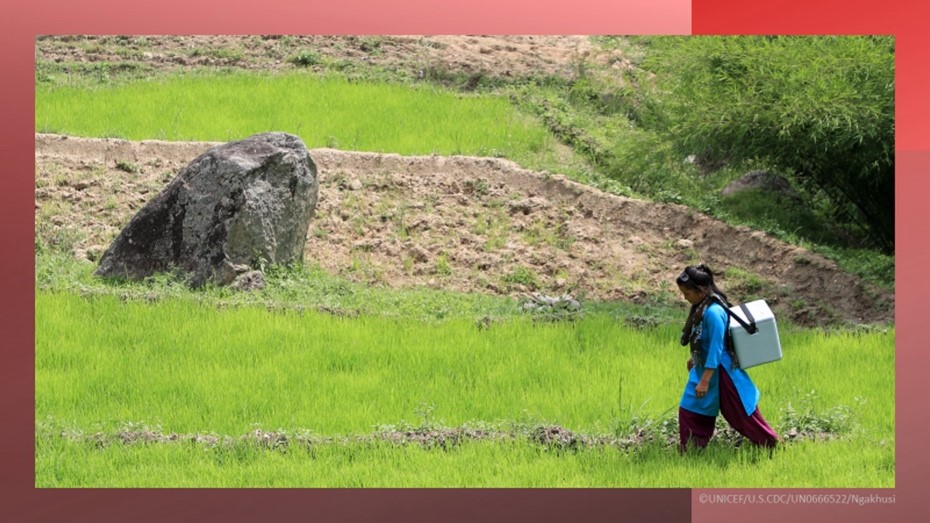

Mobility and Safety Challenges for CHWs: Many CHWs are required to travel long distances to reach the communities under their care. This exposes them to illness, safety risks, and gender-related barriers that limit their freedom of movement. And in contexts like Darfur, Sudan, and Afghanistan, cultural norms significantly restrict women’s mobility—such as prohibitions against riding bicycles or traveling without a male escort—making it difficult for female CHWs to access remote areas.
Female CHWs in these countries also face heightened risks of sexual harassment, intimidation, and physical violence. In regions like the Democratic Republic of Congo, South Sudan, and Sudan, sexual violence is widespread, and CHWs are especially vulnerable when traveling between isolated communities. In India, CHWs often face harassment, while in Afghanistan, threats from conservative community members are common and can deter women from performing their duties.
During the COVID-19 pandemic, CHWs in countries like Nepal and India stepped up as essential frontline providers, frequently working without adequate PPE, further exposing them to health risks. Addressing these challenges—especially gender-specific barriers and threats to physical safety—is critical not only to protect CHWs, but also to strengthen the resilience, retention, and effectiveness of this vital workforce.
Opportunities for advancement within the health care system: In many current health care structures, CHWs face limited or no opportunities for professional growth due to educational requirements that are out of reach. Mechanisms such as microfinance programs or performance-based incentives could support CHWs’ professional development, boosting both job satisfaction and community health outcomes.
Through the Cure Blindness Project, I helped initiate a collaborative process in India to engage CHWs in selecting high-performing women to step into a senior role known as Sangini. These women were responsible for mentoring, coaching, and supporting groups of CHWs under their supervision. This approach had a powerful impact: Sanginis significantly improved the ability of CHWs to identify, treat, and refer patients effectively. Additionally, the program fostered greater confidence, leadership presence, and self-efficacy among the Sanginis and those they mentored, and elevated their standing as trusted health care providers within their communities.
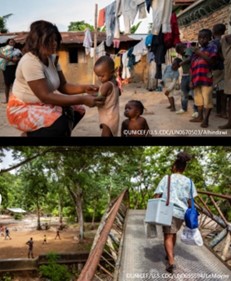
Pay Equity: CHWs are an essential yet chronically underpaid and undervalued part of the global health workforce. This lack of remuneration not only undermines their dignity and financial security but also affects retention and the quality of care they provide.
Donors and implementers have a critical role to play in shifting this reality. By advocating for and adopting ProCHW-aligned policies—such as ensuring fair and timely pay in all health program proposals—funders can drive systemic change that values CHWs as skilled professionals rather than informal volunteers. Recognizing and compensating CHWs appropriately is not just a matter of equity and financial security—it’s a strategic investment in stronger, more sustainable health systems.
Social norms: To support CHWs and shift entrenched social norms, it’s essential to elevate their status through community recognition, engage men as allies, and invest in mentorship and leadership development programs. Publicly celebrating the contributions of CHWs can enhance their credibility and respect within communities, while male engagement and allyship can help challenge traditional gender roles that often restrict women’s participation in the workforce.
In my work with the Cure Blindness Project, we discovered that a community awareness and social mobilization campaign was essential to elevate women as key first aid responders. As both male and female community members began to experience the high quality of services provided by these women, it fostered support and recognition. This, in turn, helped build a network of champions, including community leaders, men, and other healthcare professionals, who actively endorsed and advocated for their crucial role.
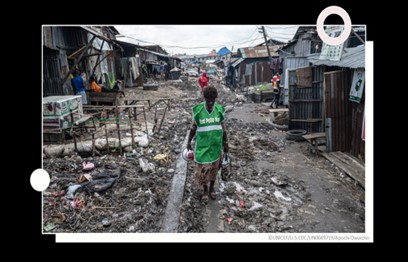
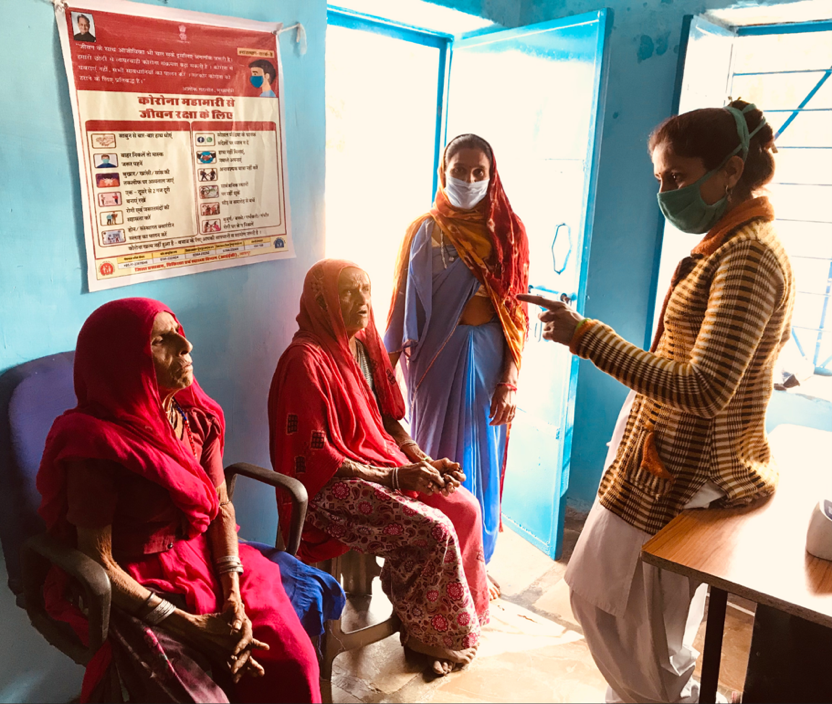
Authors:
Shubha Nagesh (India)
Sara Clements (NA)
Samara Andrade (NA)
Special thanks to:
Lanice Williams (NA)
Priya Nanda (India)
Sapna Kedia (India)
Lennie Bazira (NA)
